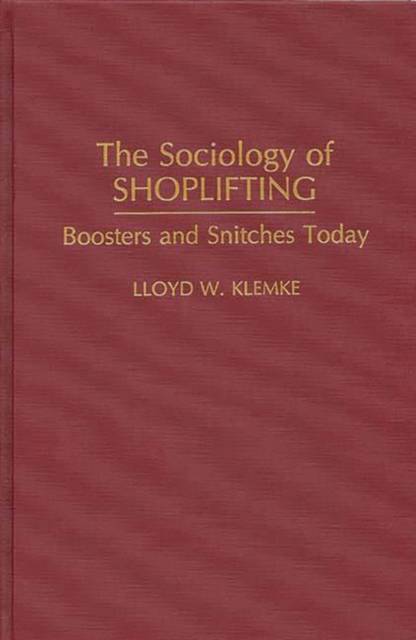
- Afhalen na 1 uur in een winkel met voorraad
- Gratis thuislevering in België vanaf € 30
- Ruim aanbod met 7 miljoen producten
- Afhalen na 1 uur in een winkel met voorraad
- Gratis thuislevering in België vanaf € 30
- Ruim aanbod met 7 miljoen producten
Omschrijving
In this absorbing study, Lloyd Klemke provides an up-to-date review and analysis of the sociological research and theoretical work on shoplifting. The analysis is structured by the three questions which dominate the sociology of deviance literature: (1) Who shoplifts and how do they do it? (the descriptive question); (2) why do they shoplift? (the etiological question); and (3) how do store personnel and the legal system deal with shoplifters? (the prevention/deterrence/labeling question). The author identifies the areas where consensus and confidence already exist in the research on shoplifting, then specifies the gaps in our knowledge, as well as areas of controversy and debate that continue to perplex students of the phenomenon of shoplifting. In assessing the strengths and weaknesses in our existing knowledge, Klemke points to directions for future research.
Studies examined include, among others, a study by Mr. French for the National Coalition to Prevent Shoplifting which put the cost of shoplifting in 1981 at $31 billion in the United States; several studies of delinquency which report shoplifting to be one of the top five varieties of delinquency committed by various samples of youth; and research documenting shoplifting as a major source of funds for street heroin addicts. Klemke also addresses the most interesting aspect of the crime: that it is often committed by respectable individuals and therefore poses a challenge to traditional explanations of deviance. This overview of a deviant behavior that is practiced by deviants and respectables alike will intrigue sociologists, criminologists, and merchants.Specificaties
Betrokkenen
- Auteur(s):
- Uitgeverij:
Inhoud
- Aantal bladzijden:
- 184
- Taal:
- Engels
- Reeks:
Eigenschappen
- Productcode (EAN):
- 9780275941086
- Verschijningsdatum:
- 30/09/1992
- Uitvoering:
- Hardcover
- Formaat:
- Genaaid
- Afmetingen:
- 152 mm x 231 mm
- Gewicht:
- 430 g

Alleen bij Standaard Boekhandel
Beoordelingen
We publiceren alleen reviews die voldoen aan de voorwaarden voor reviews. Bekijk onze voorwaarden voor reviews.











